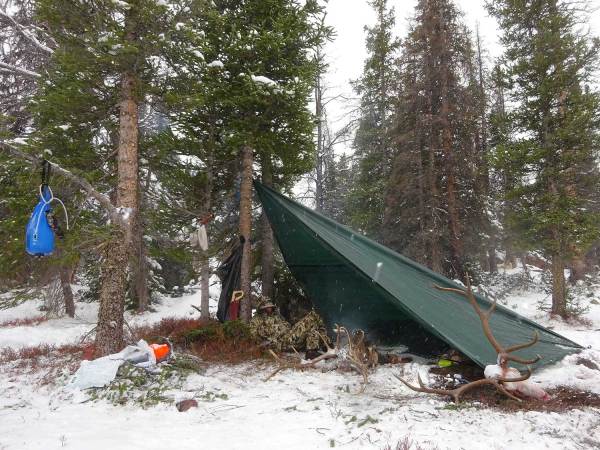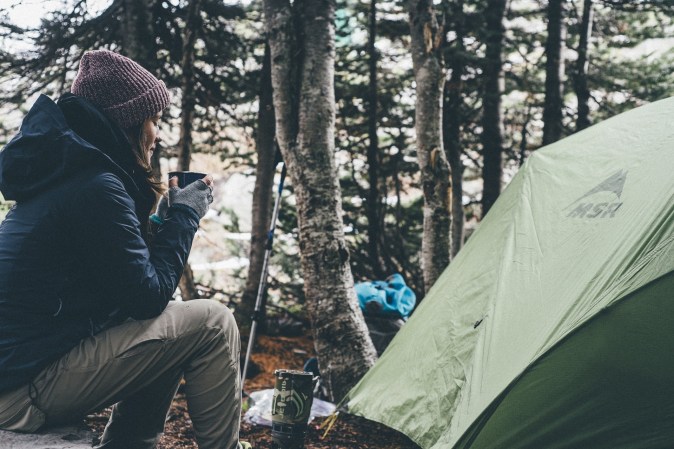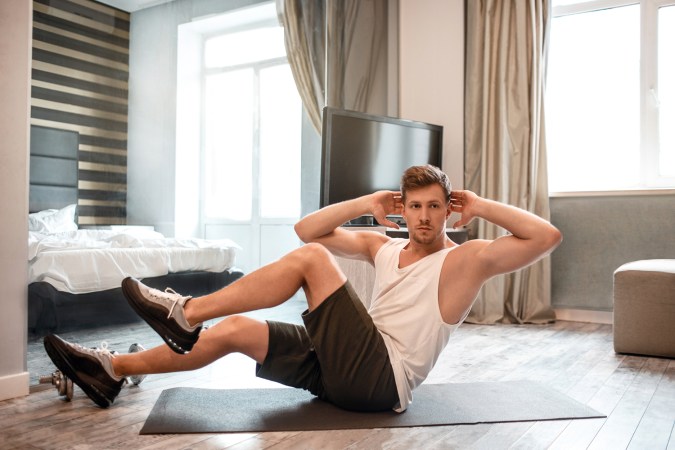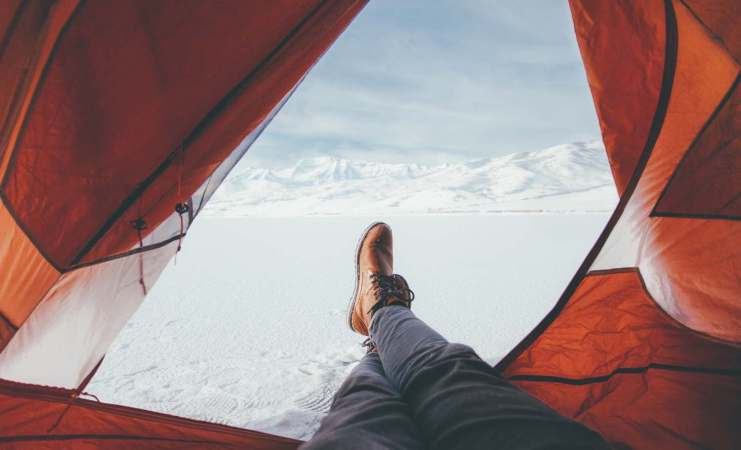

The travel world seems to be divided into those who try to bring the smallest, lightest bag possible, even for months at a time (“one-bagging”) and those who act with reckless abandon and bring more than they could ever need. I’ve tried both ends of the spectrum and they both have their flaws; the ideal situation is to pack exactly what you need, and no more. Here’s how to create a system so you always manage to do exactly that.
The problem with how people pack
One bag travel is wonderful… in theory. It works great for short trips, but as you stay longer, the inconveniences add up. You’ve essentially got two options: pack really light—one spare set of clothes, your phone charger, and not a whole lot else in a small bag that’s easy to carry—or bring as much as you can fit in a single backpack that’s uncomfortably heavy to carry around all day. It’s hard to find the right balance for longer trips. The longer you’re gone, after all, the more likely it is you’ll want the camera, smart shoes, or beanie hat you decided not to bring. But the more you pack, the worse carrying it everywhere is.
On the other hand, packing everything you might need is a recipe for disaster. This is how you get 40 pounds of luggage for a weeklong sun vacation. I’ve done the whole “alternative outfits for every day” thing and it’s a nightmare. The kitchen sink belongs at home.
The problems with one-bagging come from overthinking details and not seeing the big picture, while the issues with overpacking stem from only seeing the big picture and not thinking about how it will actually work. You need a better system.
Start with a go bag
If you think over every vacation, weekend trip, or overnight stay you’ve ever been on, you’ll realize the bare necessities remain the same: a change or two of appropriate clothes, basic toiletries, a phone charger, and maybe a book or something to keep you entertained during down time. These items should make up your go bag and the base of everything that follows.
I like to make these essentials as versatile as possible. I tend to wear jeans, black merino wool t-shirts, and a pair of boots. I look smart enough for dinner or drinks somewhere nice but I’m still comfortable walking around a museum all day. Going with high-quality, multi-purpose clothing is one thing the one-bag movement really got right.
Everything on your go bag packing list should fit in a carry-on-compliant backpack, or even a messenger bag.
My packing list for my go bag (plus the stuff I’m wearing) is:
- 3 pairs of boxers
- 2 black merino wool t-shirts
- 2 pairs of merino wool socks
- 1 half-zip sweater
- 1 pair of jeans
- 1 pair of shorts
- Deodorant and soap
- iPhone and charger
- Kindle
- Passport and bank cards
- Sunglasses
- Toothbrush and toothpaste
Now, of course, your go bag list may be a bit different, and I rarely travel with just the above. I almost always end up bringing my laptop, camera, or a pair of trainers to hit the gym. The point is that no matter what else I bring or how long I’m gone, the 20 items above are always with me.
Work out what you need for longer stays

Okay, now you have your go bag packing list, so it’s time to talk about staying longer than a night or two. The jump between a weekend trip and a week-long vacation is when most people start to lose control of themselves. A lot of people seem to pack more when they’re traveling for 10 days than when they’re going for a month.
The biggest question you need to ask yourself is how prepared you are to wash your clothes. If you don’t mind doing it (or wear clothes made from fabrics that require less washing), you don’t need to bring huge amounts more. On the other hand, if you won’t have washing facilities (or don’t want to use them), you’ll need to bring more stuff with you from the start.
Even if you’re going to wash your clothes, you probably need to bring a few extra items: a nice change of clothes for going out, maybe some shorts and trainers for the gym, or just a comfortable pair of pants for lounging around. You’re also much more likely to need a laptop. This is where you start to get to second-bag territory.
Whether you plan on packing everything into a carry-on-compliant backpack, want the ease of a rolling bag, or are just going to check a duffel, you need a second bag for everyday stuff. Backpacks that max out most airlines’ carry-on policies are big—they’re awkward to bring to a coffee shop. When I travel with one, I always bring a small tote bag for everyday errands. Similarly, rolling bags are great in the airport, but they’re a pain when you’re trying to bring your swim gear to the beach.
In addition to my go bag, when I’m going for longer I also bring:
- 2 extra pairs of boxers
- 1 extra black merino wool t-shirt
- 1 extra pair of merino wool socks.
- 1 nice shirt for going out
- 1 pair of gym shorts
- Swimwear
- Trainers
- A tote bag
Again, your long-stay gear doesn’t have to be identical to mine. If you have family in Wisconsin you visit every Thanksgiving, you’re going to need warmer clothes. On the other hand, if you never leave southern California, you can get by without jeans and probably need more shorts.
How to handle hobbies
If you don’t have any gear-heavy hobbies, packing becomes a lot easier. Short trips to cities or resorts are simple to manage—we’ve literally just worked out your complete packing list for such trips. The problems start when you begin trying to take your hobbies with you, or travel specifically for them.
I’m a professional photographer, which means I need to bring my camera with me on most trips. And if I bring that, I need to bring my tripod, two lenses, a remote trigger, and a few other bits. All of a sudden, my nice, light go bag weighs 20 pounds and I can barely move.
Worst of all, photography isn’t even my most gear-heavy hobby. I love to ski, but since I live in Ireland, I need to fly somewhere to do it. There just doesn’t seem to be a way to convince airport staff that my powder skis are actually an emotional support animal and should be allowed in the cabin.
It’s really easy to go too far when you start bringing your hobbies with you. What if I bring the wrong lens? Or the wrong skis for the conditions? Why shouldn’t I just bring four lenses and three sets of skis so I’m covered?
Honestly, part of the reason I put so much thought into my go bag and long-stay packing list is so I could bring as much other gear as possible. Thankfully, I’ve gotten a bit smarter about it. Here’s my strategy for packing for hobbies.
Prioritize gear-light hobbies. If you’re going to the mountains for a week and have a choice between bringing your hiking boots or fly fishing rod, take the boots.
Rent when you can. If, however, when you arrive, you find a fishing shop with rods to rent, go for it. The cost of bringing bulky gear like fishing rods or surf boards is often much higher than simply renting them when you get to your destination.
Bring versatile equipment. Don’t bring hyper-specific stuff like powder skis—bring things that will work in whatever circumstances you find yourself in, like a decent pair of all-mountain skis.
Don’t bring anything you can’t afford to break. Travel is super rough on gear. Avoid bringing any prized possessions or anything you absolutely can’t bear to see lost or ruined.
Be ruthless. If you didn’t use a piece of gear the last time you went away, don’t bring it the next time. Steel your heart and cut things down to basics.
What gear you need (or want) to bring will totally depend on what your hobbies are and where you’re going, but by following the rules above, you should be able to keep it manageable. Combine that with a tight go” bag and a reasonable amount of long-stay gear and you won’t overpack.
How it all works together

Now that you’ve got a list in your head, it’s time to figure out how to stick to it. The best way I know is packing cubes—different-sized zippered bags that go inside your main bag.
Managing one huge list and trying to pack everything at once is a sure way to forget important stuff. Instead, breaking everything out into dedicated packing cubes makes it super simple to always bring exactly what you need.
Let’s start with the go bag: it should ideally remain packed and stashed by the door. If there’s ever a family emergency or you need to suddenly leave for any reason, it’s there, ready for you to take. In mine, there’s one packing cube for clothes, with everything else just loose in the bag. A similar situation will probably work for you.
For an extended stay, just add another packing cube for extra clothes. If I think I’m going to stay longer, I just toss the additional cube into my (now very full) go bag, confident I’ve got everything I need for a week away.
It’s with hobbies that things start to get interesting, especially as they often necessitate small, easily forgettable bits of essential equipment. Since there’s a bit of overlap in my hobbies, I have a modular system where everything is broken out into interchangeable packing cubes. I’d recommend you adapt this system for your situation.
For example, I have one packing cube of three base layers of clothing and two mid-layers. If I’m going on a ski trip, I grab it, along with the packing cube that contains my ski goggles, outerwear, and avalanche safety gear. On the other hand, if I’m going on a hiking trip, I grab the base layers packing cube, as well as the one with my headlamp, hiking socks, and hiking boots. If it’s a photography trip, I take all the hiking stuff with the packing cube full of camera gear.
By keeping things modular and giving each packing cube a dedicated purpose, I always make sure I have everything I need—and don’t give myself an opportunity to overpack.
Now, of course, part of this is idealized. I wish I could afford the level of redundancy, extra gear, and space to have a travel room with all my packing cubes ready to go, so packing for any trip could be done in an instant. Real life, however, gets in the way. Still, just because a system has a little bit of fantasy to it doesn’t mean it won’t work. If you travel a lot, try it for yourself, and you’ll see.















